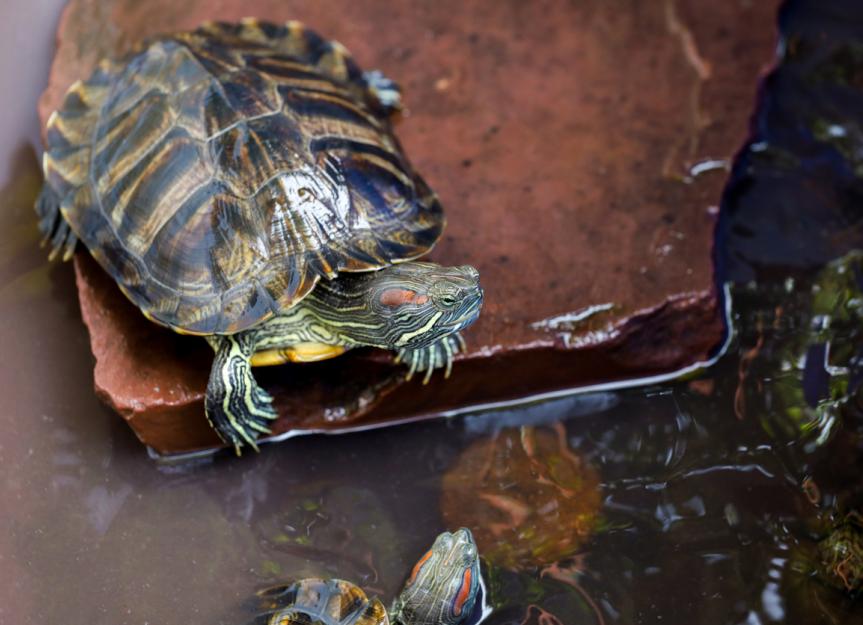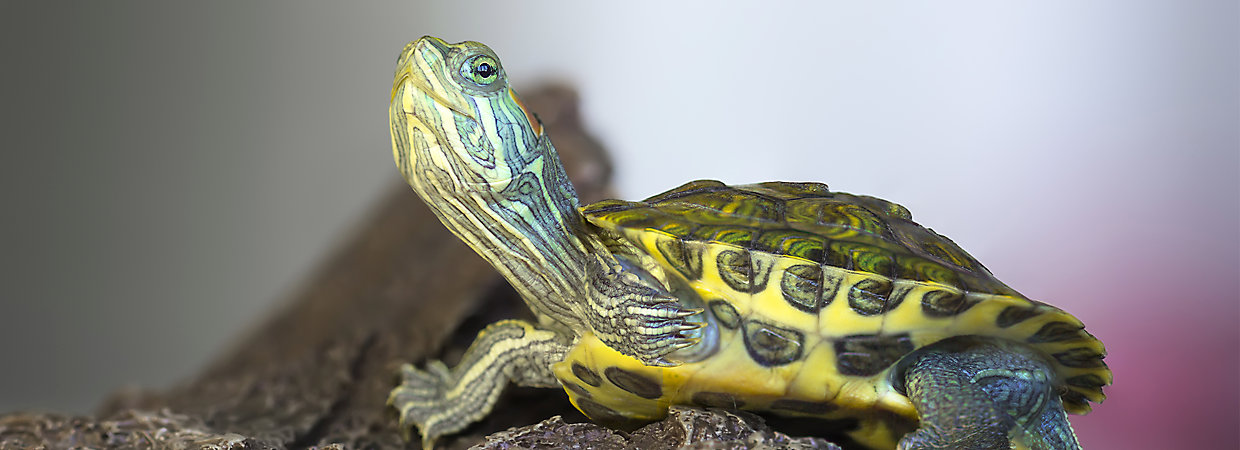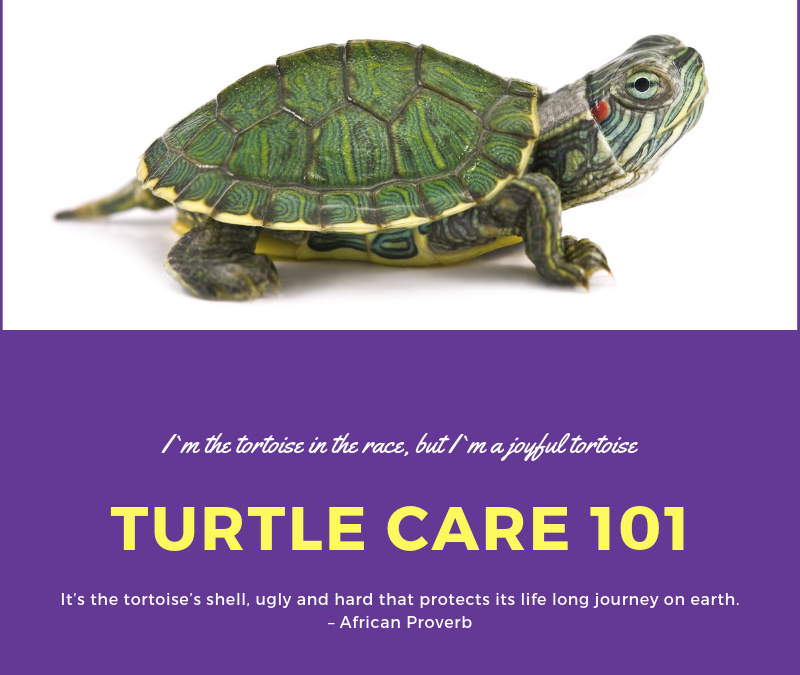To care for a pet turtle, provide a proper habitat with clean water, a basking area, and appropriate lighting. Regularly feed your turtle a balanced diet of vegetables, insects, and commercial turtle pellets.
Pet turtles require specific care to thrive in captivity. By ensuring their habitat mimics their natural environment, providing a varied diet, and monitoring their health, you can promote their well-being. Understanding the unique needs of your turtle species and establishing a routine for feeding, cleaning, and monitoring will help create a healthy and happy life for your pet.
In this guide, we will explore the essential aspects of caring for a pet turtle, from setting up the ideal habitat to maintaining their overall health and well-being.
Choosing The Right Turtle Species
Consider Your Lifestyle
Before selecting a pet turtle, assess your daily routine and available space.
Research Different Species
Understand the specific needs and characteristics of various turtle species.

Credit: www.wikihow.com
Setting Up The Habitat
To care for a pet turtle, start by setting up the habitat with a large tank, a basking area, UVB lighting, a water heater, and a water filter. Create a comfortable environment by adding appropriate substrate and hiding spots. Ensure the water temperature, cleanliness, and lighting are optimal for your turtle’s well-being.
Caring for a pet turtle involves providing a suitable habitat for them to live in. Setting up the habitat requires careful consideration of the turtle’s needs and preferences. Here are the key steps to follow when setting up the habitat for your pet turtle:Selecting The Right Tank
The first step in setting up the habitat for a pet turtle is selecting the right tank. Turtles need a tank that is large enough for them to move around freely and deep enough to allow for swimming. As a rule of thumb, the tank should be at least four times the length of the turtle and twice its width. Additionally, the tank should have a secure lid to prevent escape and protect the turtle from household pets.Creating A Proper Basking Area
Turtles require a basking area where they can rest and warm themselves under a heat lamp. The basking area should be a flat surface, such as a rock or platform, that is partially submerged in water. The temperature of the basking area should be between 85 and 90 degrees Fahrenheit. It’s important to place the heat lamp at a safe distance from the basking area to avoid burns.Adding Water And Land Features
Turtles need both water and land features in their habitat. The water should be deep enough for swimming and should be cleaned regularly to prevent bacterial growth. The land area can be created using rocks, sand, or gravel, and should be large enough for the turtle to move around on. Adding plants and other decorations can also create a more natural and stimulating environment for the turtle. In conclusion, setting up the habitat for a pet turtle requires careful consideration of their needs and preferences. By selecting the right tank, creating a proper basking area, and adding water and land features, you can create a comfortable and stimulating environment for your pet turtle to thrive in.Maintaining Water Quality
To maintain water quality for your pet turtle, ensure proper filtration and regular water changes. Monitor pH levels and invest in a quality water testing kit to keep the habitat clean and healthy. Regular maintenance is key to ensuring a safe environment for your pet.
Using A Good Filter
Regular Water Testing And Changes
Feeding Your Pet Turtle
Feeding your pet turtle is an essential part of their care. Understanding their dietary needs and offering a variety of foods is crucial to keeping them healthy and happy.
Understanding Dietary Needs
Turtles have diverse dietary needs depending on their species. Research your turtle’s specific requirements to ensure you are providing the right balance of nutrients.
Offering A Variety Of Foods
Provide a balanced diet by offering a variety of foods such as leafy greens, vegetables, fruits, and commercial turtle pellets. This will ensure they receive the necessary nutrients for optimal health.
Providing Proper Lighting And Heating
Providing proper lighting and heating is crucial for the health and well-being of your pet turtle. Turtles require specific UVB lighting and a consistent temperature to thrive in captivity. Here’s how to ensure your turtle’s habitat meets these essential needs.
Choosing The Right Uvb Light
When it comes to selecting a UVB light for your pet turtle, it’s important to choose a bulb specifically designed for reptiles. Look for a UVB bulb that provides a spectrum of 290-320 nanometers, which is essential for your turtle’s calcium metabolism and overall health. Ensure the UVB light covers the entire basking area to allow your turtle to absorb the necessary UV rays.
Maintaining The Proper Temperature
Keeping the habitat at the right temperature is vital for your turtle’s well-being. Maintain a basking area temperature of 85-90°F (29-32°C) and an ambient temperature of 75-80°F (24-27°C) during the day. At night, the temperature can drop slightly, but it should not fall below 70°F (21°C). Use a combination of heat lamps, ceramic heaters, and under-tank heating pads to achieve and maintain the desired temperature levels.

Credit: www.petmd.com
Handling And Interaction
When it comes to caring for a pet turtle, handling and interaction play a crucial role in maintaining their well-being. Understanding a turtle’s behavior and knowing the proper handling techniques are essential for building a strong bond with your shelled companion.
Understanding A Turtle’s Behavior
Turtles have their unique behaviors and preferences, and it’s important to observe and understand them to provide appropriate care. While some turtles may enjoy being handled and petted, others may be more reserved and prefer minimal interaction. By recognizing your turtle’s body language and reactions, you can tailor your interactions to suit their comfort level.
Proper Handling Techniques
When handling a turtle, it’s crucial to ensure their safety and minimize stress. Always approach your turtle calmly and avoid sudden movements. Support their body properly and avoid lifting them by their limbs. Additionally, it’s essential to wash your hands before and after handling to prevent the spread of any potential infections.
Health And Veterinary Care
Discover essential tips for providing optimal health and veterinary care for your pet turtle. Learn about proper diet, habitat setup, and regular check-ups to ensure your turtle’s well-being. Prioritize their physical and mental health by creating a safe and enriching environment.
Taking care of a pet turtle can be an enjoyable and rewarding experience. However, it is important to remember that turtles are living creatures that require proper care and attention to ensure they remain healthy and happy. Health and veterinary care are critical components of turtle care that every owner must understand. Here are some important things to keep in mind.Recognizing Signs Of Illness
Turtles are known for their hardy nature, but they are not immune to illness. It is essential to keep an eye on your turtle’s behavior and appearance to detect any signs of illness early. Some common signs of illness in turtles include:- Loss of appetite
- Lethargy or inactivity
- Swollen or puffy eyes
- Runny nose or eyes
- Discharge from the mouth or nose
- Changes in behavior, such as aggression or withdrawal
- Shell abnormalities or discoloration
Finding A Reptile Veterinarian
Not all veterinarians are trained to treat reptiles, so it is crucial to find a veterinarian with experience treating turtles. You can ask for recommendations from other turtle owners or search online for reptile veterinarians in your area. When choosing a veterinarian, consider factors such as their experience, credentials, and availability. It is also important to schedule regular check-ups with your veterinarian to ensure your turtle remains healthy. During these check-ups, your veterinarian can examine your turtle for any signs of illness or disease and provide advice on how to improve your turtle’s health. In conclusion, caring for a pet turtle requires more than just providing food and water. As a responsible owner, you must be attentive to your turtle’s health and seek veterinary care when necessary. By recognizing signs of illness and finding a reputable reptile veterinarian, you can ensure that your turtle remains healthy and happy for years to come.Understanding Legal Considerations
Checking Local Regulations
Before getting a pet turtle, check local regulations regarding ownership and care requirements.
Responsible Pet Ownership
Being a responsible pet owner means following laws and providing proper care for your turtle.

Credit: www.petsmart.com
Conclusion
Taking care of a pet turtle requires patience, consistency, and proper knowledge. By providing a suitable habitat, balanced diet, and regular veterinary check-ups, you can ensure your turtle’s well-being and happiness. Remember, each turtle has unique needs, so understanding your pet is key to their long-term health and happiness.






Leave a Reply